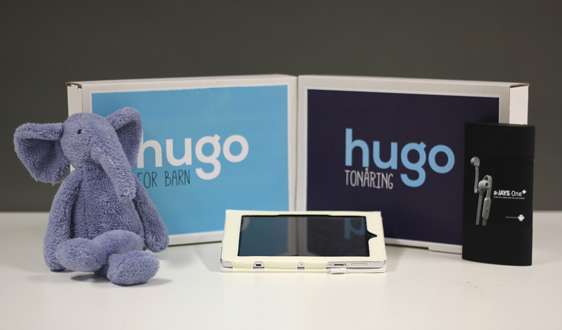Design research can improve patient experiences of radiotherapy

Patients risk experiencing anxiety and fear when health care does not meet individual patients' needs. New approaches to reduce anxiety for instance over radiotherapy are needed and design research is well-suited to meet these challenges. This is according to a dissertation at Umeå University.
Patient experiences are complex and shaped by many factors: the care staff, the medical technology patients are subjected to, the information about the treatment process given beforehand and the institutional structures that health care builds upon.
Anxiety can affect more than a third of all cancer patients as they go through treatment, and this anxiety has been directly linked to a decrease in these patients' quality of life. Tara Mullaney has focused her research on the patient experience of radiotherapy; one of the three main forms of treatment for individuals with cancer, which involves the use of highly specialised medical technologies.
Many of us have either experienced for ourselves or heard stories of other people's negative health care experiences, often in response to interactions with medical technologies. For example, within radiotherapy, the cancer patient must be restrained and immobilised in order to be treated, which can result in feelings of anxiety and claustrophobia during this process.
"I wanted to understand why these problematic experiences exist within radiotherapy today, and how design research could help to call attention to and improve the treatment process," says Tara Mullaney.
In her research, she has investigated the different underlying factors of the patient radiotherapy experience, and has identified three factors that play a crucial role in whether patients develop anxiety.
Interactions with the treatment technologies and a lack of adequate preparatory information can directly trigger anxiety and fear in patients. However, care staff often mediate these emotions by fostering feelings of trust in patients, and helping to adapt the technologies to minimise their negative impact. But why are technologies that cause anxiety and claustrophobia developed in the first place?
"My research suggests that patients are not seen as users of medical technologies, despite closely interacting with them, and as a result of their interactions are often not addressed within the technological development process," says Tara Mullaney.
In addition to her research of the patient experience of radiotherapy, she also developed a series of design interventions aimed at improving this experience.
In one project, funded by the Swedish Childhood Cancer Foundation, Tara Mullaney led a team of students from Umeå Institute of Design in developing special preparation material for young children going through radiotherapy – to decrease their fear and worry about the treatment process.
In another design, Tara Mullaney developed a new approach for positioning patients, aimed at decreasing patient anxiety by involving them in this process. This concept has been picked up by the Swedish national testbed for innovative radiotherapy, which has received funding from Vinnova to investigate this possibility further.
Tara Mullaney's research provides both evidence for the importance of designing patient interactions with medical technologies, as well as a methodological approach for how this might be accomplished successfully via design research, given the complexity of health care systems.
"There is a need for health care to shift its focus from providing the best treatment to providing the best care to patients. Care is a concept that encompasses more than the treatment of disease; it also includes the way that an individual is taken care of during their time as a patient. Interestingly, by caring for patients and attending to their experience, it is possible to improve both patient well-being and treatment efficacy," says Tara Mullaney.
More information: The dissertation is available online: urn.kb.se/resolve?urn=urn:nbn:se:umu:diva-116989


















